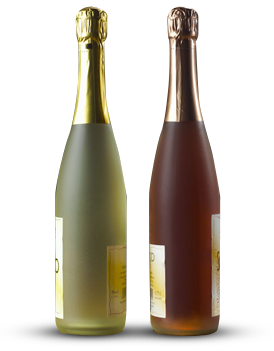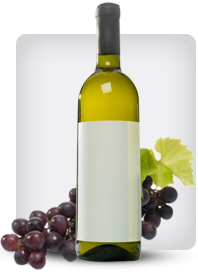

Tag: WineMaking
The pursuit of a great bottle of California Cabernet Sauvignon is a journey through sun-drenched vineyards and meticulous winemaking. While personal taste is paramount, understanding the impact of vintage—the weather conditions of a particular growing season—is key to unlocking the region’s finest expressions. Certain years stand out as benchmarks of quality, offering exceptional balance, complexity, and aging potential. Here is a guide to the best recent vintages for California Cabernet Sauvignon. The Hallmarks of a Great Vintage
Posted onBefore listing specific years, it’s important to know what makes them great. Ideal conditions for Cabernet Sauvignon in California include:
- A warm, consistent growing season to achieve optimal ripeness.
- A lack of extreme heat spikes, which can stress vines and produce overly alcoholic or “jammy” wines.
- A long, gradual fall with cool nights, which helps grapes retain acidity and develop complex flavors.
- Minimal rain during the harvest period to prevent dilution and rot.
Standout Vintages to Seek Out
2018
Widely hailed as a modern classic, the 2018 vintage is one of near-perfection. A long, moderate growing season with no major heat events allowed for a long hang time. The resulting wines are profoundly balanced, with deep, concentrated fruit, refined tannins, and vibrant acidity. They are powerful yet elegant, with immense aging potential. This is a benchmark year to buy with confidence.
2016
Following several drought years, 2016 provided a welcome reprieve with timely winter rains. The season was steady and warm, leading to wines of exceptional structure and purity. Cabernets from 2016 are known for their classic profile: ripe blackcurrant and cassis flavors, firm but polished tannins, and a long, expressive finish. They are approachable now but will continue to evolve beautifully for years.
2013
A legendary vintage that set a high bar for the decade. The 2013 growing season was ideal, with perfect weather from spring through harvest. The wines are intensely concentrated, rich, and powerful, yet they maintain a remarkable sense of balance and finesse. Tannins are abundant but silky. These are cellar-worthy wines that represent the pinnacle of Napa Valley Cabernet.
2019
Similar in quality to 2018, 2019 produced another stellar lineup. The vintage yielded wines that are perhaps slightly more approachable in their youth than the 2018s, with a plush, generous fruit character and supple tannins. They offer incredible drinkability now but possess the depth and structure to suggest a long and prosperous life ahead.
A Note on “Challenging” Vintages
It is worth noting that a vintage deemed “challenging” (such as 2011 or 2017, which were marked by rain and wildfires, respectively) does not mean all wines from that year are poor. In such years, the skill of the winemaker and the location of the vineyard become critically important. Many top producers still crafted outstanding wines by being highly selective with their fruit.
Ultimately, the “best” year is the one that aligns with your palate and purpose. The vintages listed here—2013, 2016, 2018, and 2019—represent a golden era for California Cabernet Sauvignon and offer a superb starting point for any enthusiast or collector.
Sustainable Winemaking Practices Guide
Posted onIntroduction
As the global demand for wine continues to grow, so does the need for sustainable winemaking practices. Sustainable viticulture and winemaking not only help preserve the environment but also improve wine quality, reduce costs, and enhance brand reputation. This guide explores key sustainable practices that wineries can adopt to minimize their ecological footprint while maintaining high production standards.
1. Sustainable Vineyard Management
Organic & Biodynamic Farming
avoids synthetic pesticides and fertilizers, relying instead on natural alternatives like compost and cover crops.
takes a holistic approach, treating the vineyard as a self-sustaining ecosystem, often following lunar cycles for planting and harvesting.
Water Conservation
– Implement drip irrigation to reduce water waste.
– Use rainwater harvesting and soil moisture sensors to optimize irrigation.
– Plant drought-resistant grape varieties to minimize water dependency.
Soil Health & Biodiversity
– Practice cover cropping to prevent erosion and improve soil fertility.
– Encourage beneficial insects and natural predators to reduce pesticide use.
– Rotate crops and use organic compost to maintain nutrient-rich soil.
2. Energy Efficiency in the Winery
Renewable Energy Sources
– Install solar panels or wind turbines to power winery operations.
– Use biomass energy from grape pomace and other organic waste.
Energy-Saving Techniques
– Optimize temperature control in fermentation and storage with insulated tanks.
– Switch to LED lighting and energy-efficient cooling systems.
3. Waste Reduction & Recycling
Grape Waste Utilization
– Repurpose grape pomace (skins, seeds, stems) for compost, animal feed, or biofuel.
– Extract tartaric acid and grape seed oil for commercial use.
Packaging Innovations
– Use lightweight glass bottles or recycled materials to reduce carbon footprint.
– Explore biodegradable corks and eco-friendly labels.
– Encourage bulk wine shipments to minimize packaging waste.
4. Carbon Footprint Reduction
Sustainable Transportation
– Source grapes and materials locally to reduce transport emissions.
– Use electric or hybrid vehicles for distribution.
Carbon Offsetting
– Partner with reforestation programs or invest in carbon credit initiatives.
5. Certification & Consumer Engagement
Sustainability Certifications
– Obtain certifications like ISO 14001, Fair Trade, Demeter (Biodynamic), or Sustainable Winegrowing (SWNZ, CSWA) to validate eco-friendly practices.
Transparent Marketing
– Educate consumers about sustainability efforts through eco-labels and storytelling.
– Promote wine tourism with vineyard tours highlighting green initiatives.
Conclusion
Sustainable winemaking is no longer optional—it’s a necessity for the future of the industry. By adopting eco-friendly vineyard practices, reducing energy consumption, minimizing waste, and engaging consumers, wineries can produce exceptional wines while protecting the planet. The transition to sustainability may require investment, but the long-term benefits for the environment, business, and wine quality make it a worthy endeavor.
Would you like additional details on any specific aspect of sustainable winemaking?
Wine-Making Countries – Old World Vs New World
Posted onNo matter how you prefer your wines, one can say without a doubt that this is one of the more exciting times in wine history. This is due to many factors. The Internet gives us so much more of a worldwide round table to discuss wine. International markets and globalization are erasing the old barriers to import and export of wine; you can go to your corner store and buy five bottles from five different countries today. The New World wineries are coming into their own, meeting the challenge of displacing the Old World from the throne of wine-producing.
For purposes of definition, let’s get it straight that when we say “Old World”, we’re talking about Europe, at least as far as wine-making countries go. And when we say “New World”, we’re talking about almost everywhere else, but notably the United States, Australia, New Zealand, South America, and even South Africa.
You can see the sharp divide between the two worlds. Old World wines tend to be classified by terroir – that is, the region where they’re produced. New World wines tend to be classified by their breed of grape. Some New World wineries are starting to try to take the mantle in this regard, promoting themselves as regions just as relevant to the wine world as the Old World. So Napa Valley is almost a household name in the United States, while Australians may find their wine proudly labeled “Barossa Valley” and New Zealand boasts the prestige of their Marlborough region.
“Terroir” means more than a dot on the map, however. It also stands for the conditions of the winery itself – the soil, the climate, the environment, and even the local ecosystem. Wine, more than any other beverage, is influenced by many more things than the kind of grape; you can plant the same grapes in clay soil, gravel soil, and sand and cultivate them the same way and make wine the same way but still end up with three different tasting wines. Tiny variations, like what kind of pollen spores are in the air, or whether you got 12 inches of rain in May or 10, or whether temperatures were 3 degrees hotter over the summer, can make a noticeable difference in the taste.
Amongst wine enthusiasts, there is much disagreement and debate about whether New World wines can hold their own against the Old World. The majority consensus is that Old World is still holding the reigns, while the New World is trying to catch up. Certainly, the New World has produced some very good wines, but the Old World of Europe and the proud lions of wine-making, such as France, Italy, and Spain, simply have loads more experience. The bottles that win all the medals at world-class competitions still bear European labels, and will for quite some time.
But for the consumer-level market, it’s a different story. The United States and Australia have pushed their way into the world market, sometimes by cutting the price to make their bottles more attractive to retailers. It is this practice of producing cheap, industrial wine and competing for price that led to the epithet “plonk”. If you want to make a New Zealand or South African wine-fancier mad, drop the word “plonk”. It isn’t all plonk, of course, and even an Old World winery or two has begun to fight back with its own plonkish offerings, but the fact remains that the Old World simply loves wine too much to dirty their hands with making wine a cheap, uncouth business.
On that note, we will just leave it at this: the New World will have to strive harder to prove itself in the global wine arena. But there is no doubt that they will. The New World will also have to get a lot more experience under its belt before the global market takes its wines seriously. But that is almost guaranteed to happen over time. In the meantime, we can all look forward to a more diverse market, with many intriguing developments still ahead.
Find More Malbec Wine Articles
popular posts
-

Top-rated Napa Valley Cabernet Sauvignon 2025: A Vintage of Elegance and Power
11-13 2025The 2025 vintage in Napa Valley is already being heralded as one for the history books. A near-perfect growing season, marked by a mild Read More
-

Top-Rated Old-Vine Zinfandel 2025: A Vintage of Power and Poetry
11-10 2025The year 2025 has bestowed upon Zinfandel lovers a vintage to remember. While trends in the wine world come and go, the profound depth Read More

